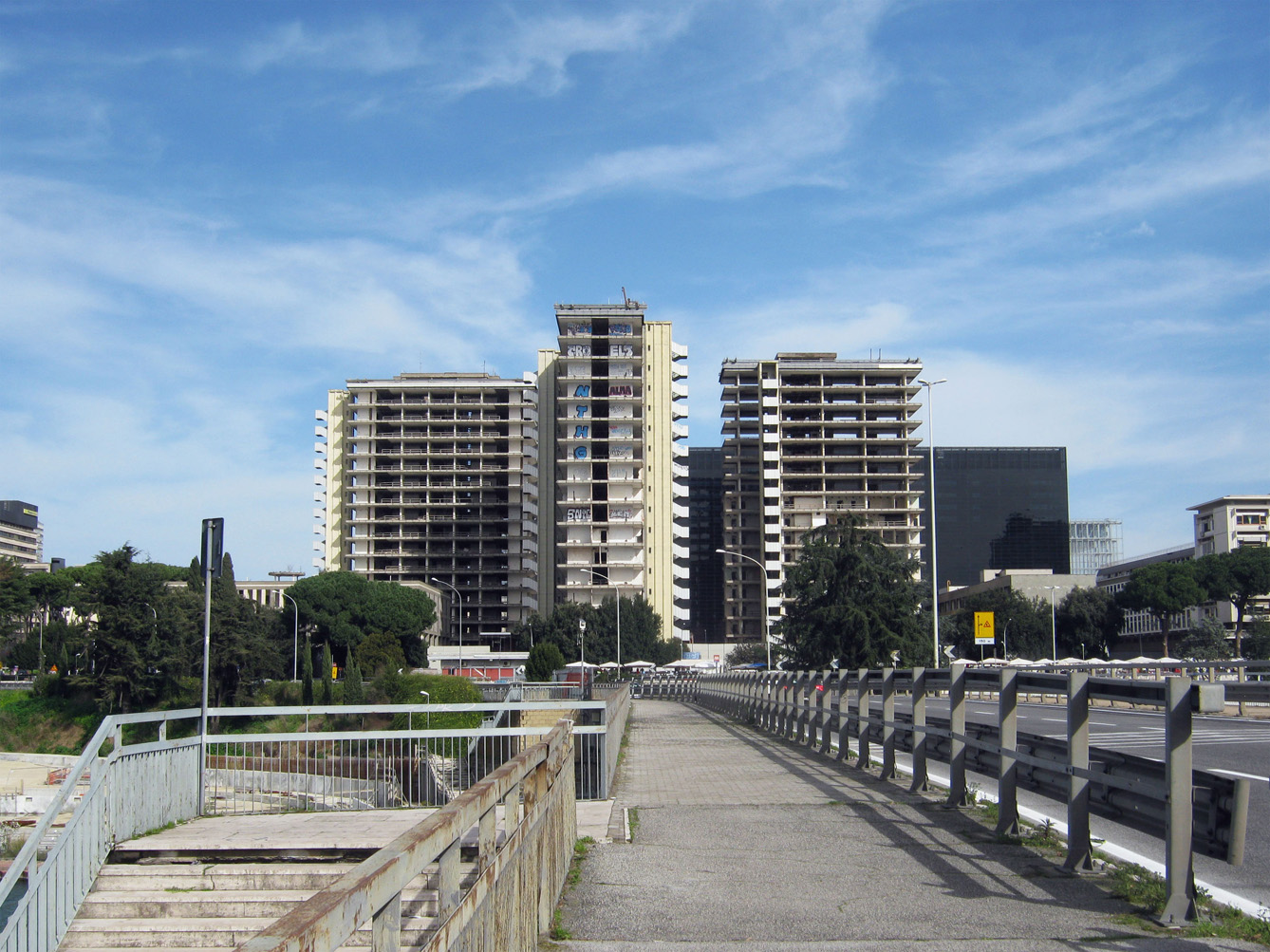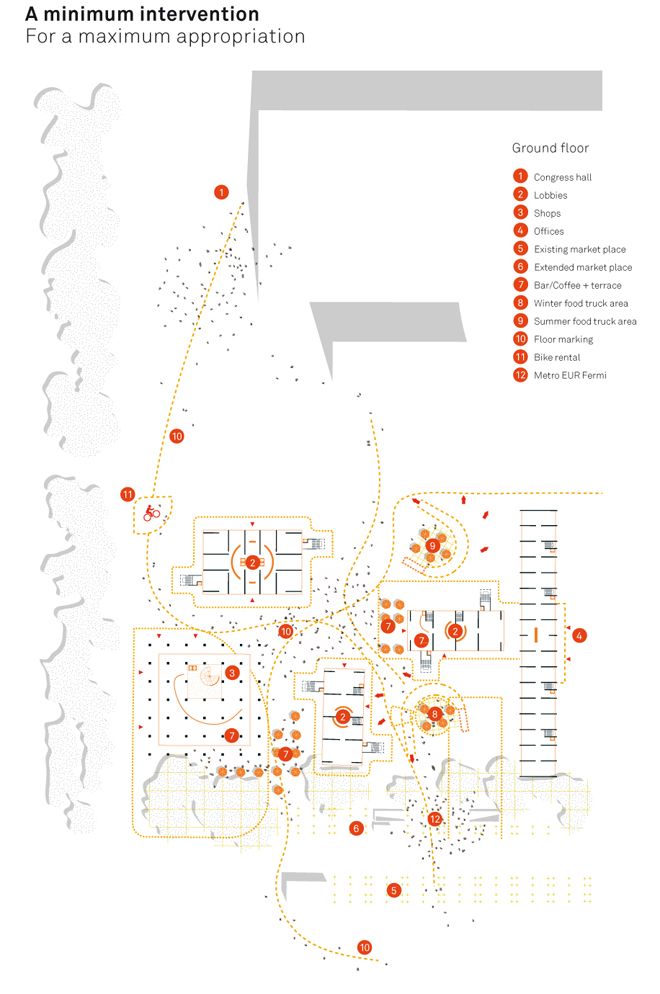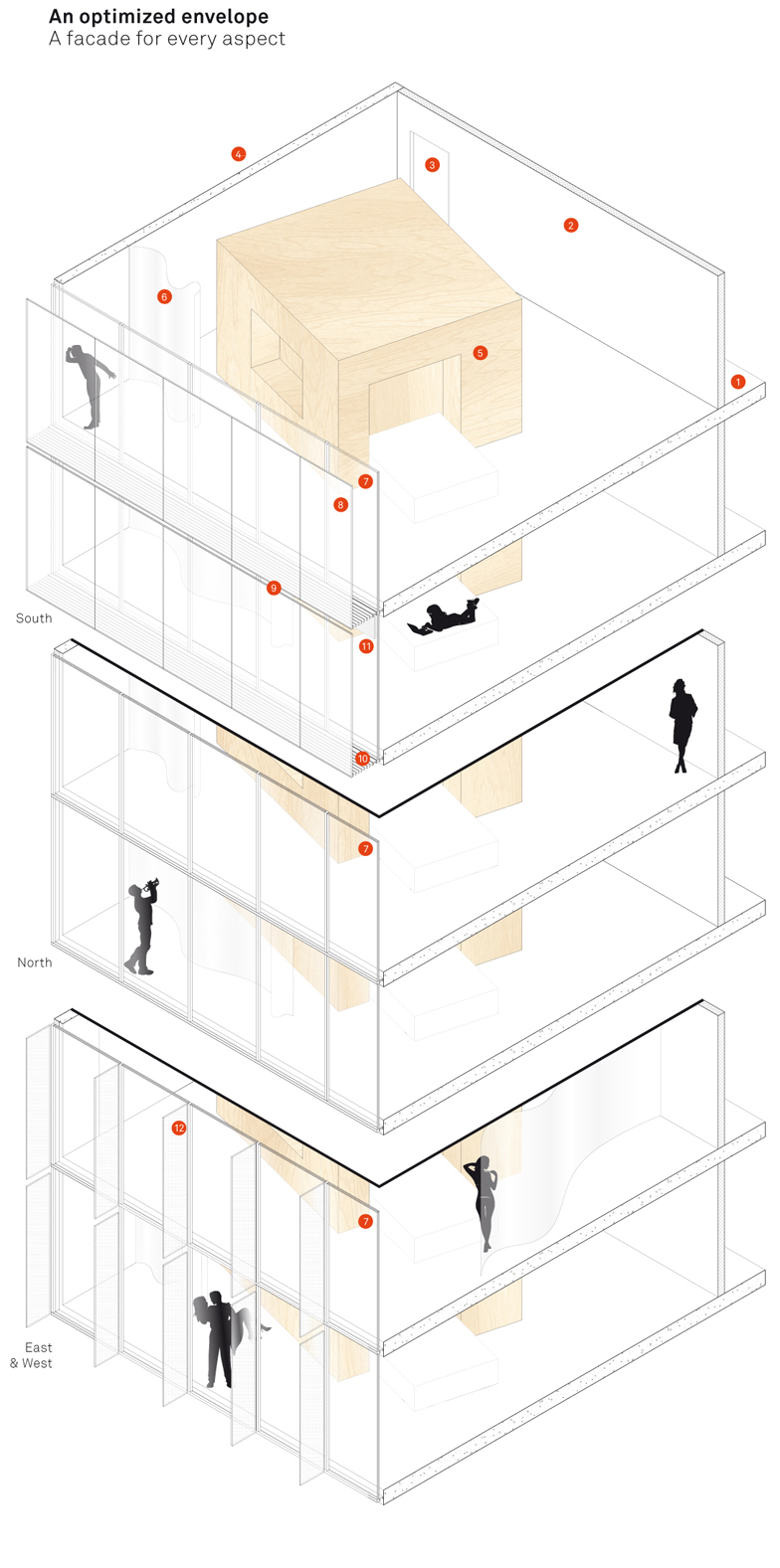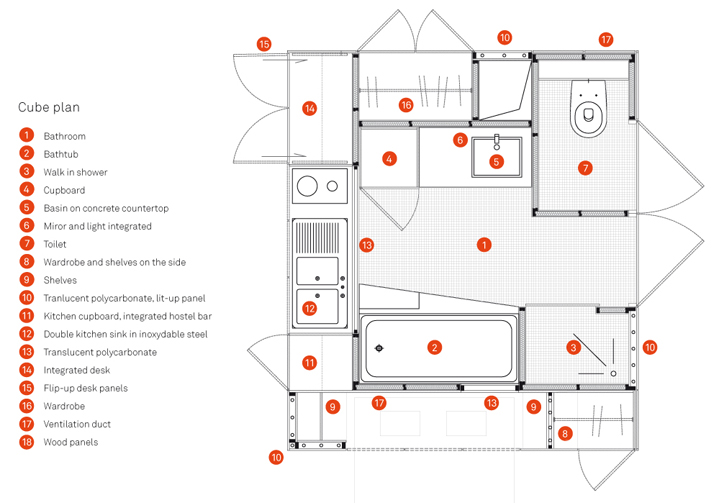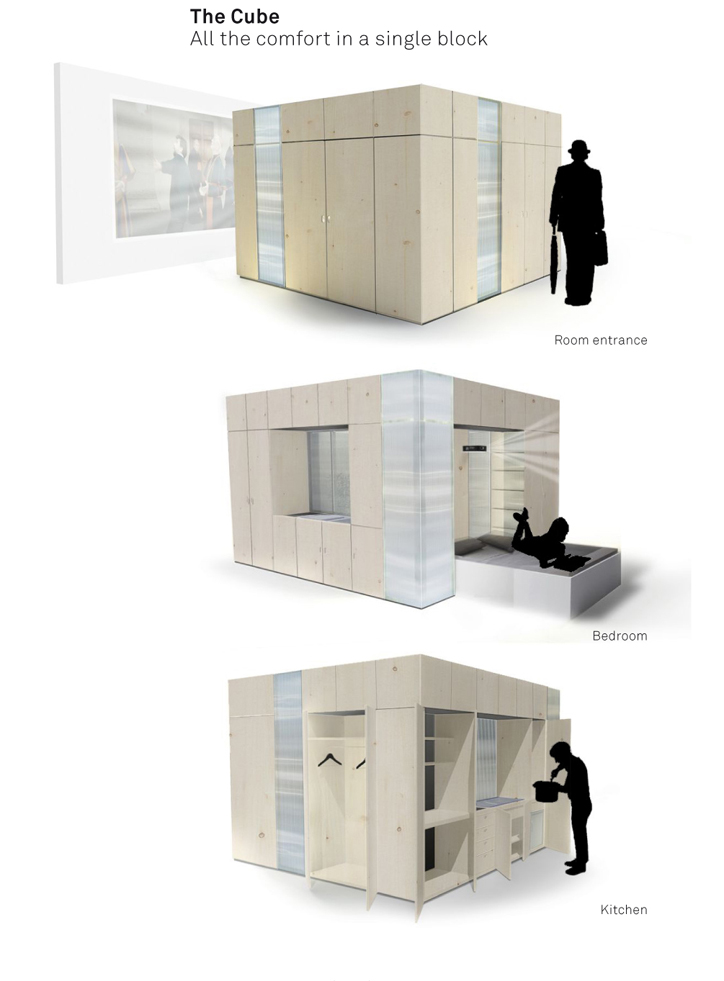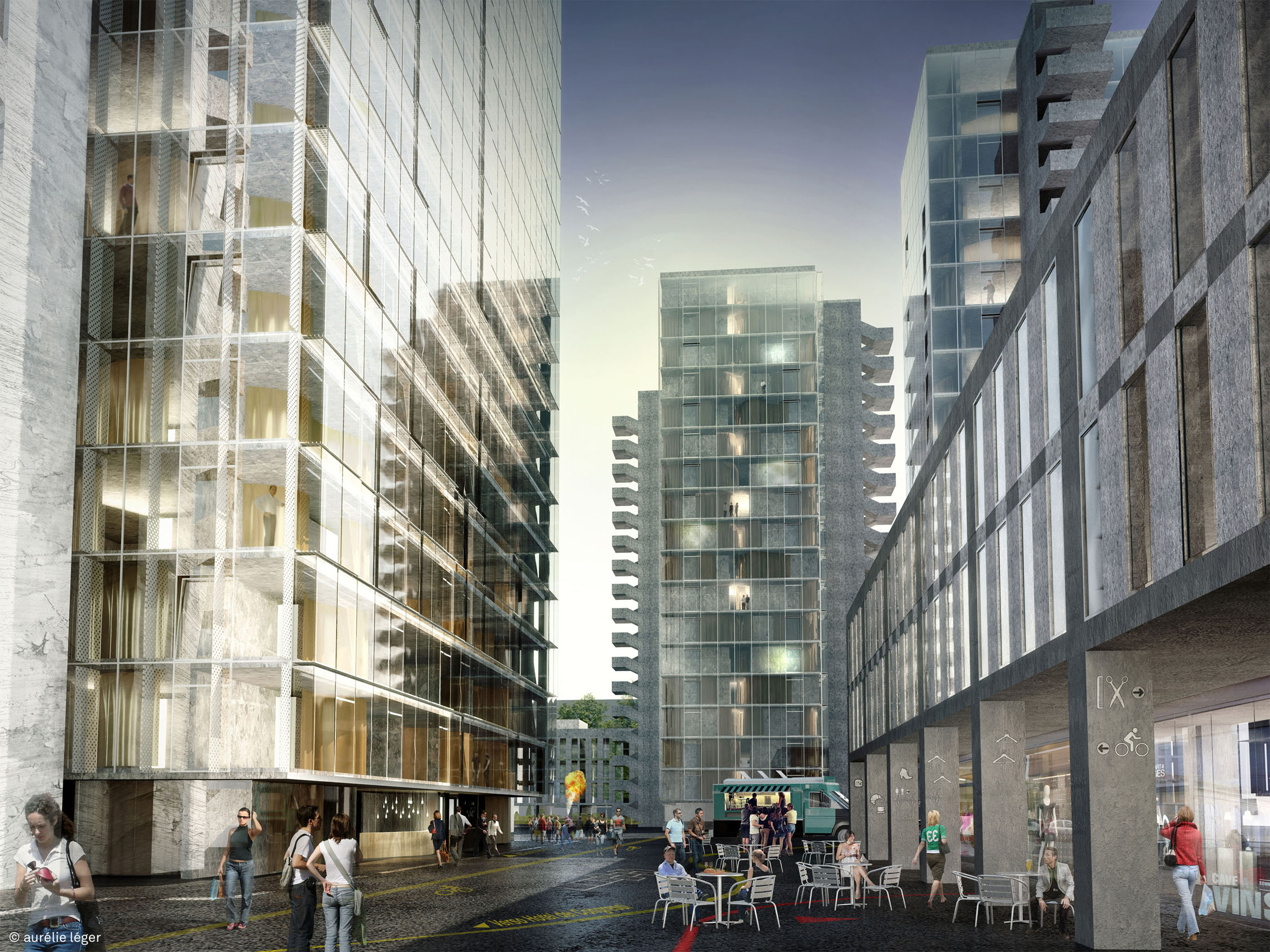2022-BIU-ROM.IT-2014
Client: Unknown
Status: Competition (2014)
Clasification: 2 prize
Location: Rome, Italy
Coordinates: 41.829702,12.4697353
Climate: Mediterranean, Temperate
Materials: Concrete, Wood
Environment: Urban
Visualizer: Studio
Scale: Large
Types: Hotel, Refurbishment, Residential
Designing a project with a sustainable development approach is, at the earliest stage, exploring the existing part of it, in is whole shape, in every dimensions: global context, climate, caracteristics in the buildings…
Within the area of the esposizione Universale di Roma, we are asked to reinvest modern ruins in order to plan a XIXst century hostel. Beyond the obvious, practical, advantage of re-using civil works, the project is a reflexion toward the substance of its intervention on an existing building: Is it the only matter of saving grey energy, by keeping the walls and concrete floors?On the opposite, can’t the existing be considered as the actual essence of the project identity, and become the starting point of its image?
On the opposite, can’t the existing be considered as the actual essence of the project identity, and become the starting point of its image?
We appreciate the technicals and esthetical qualities of the concrete skeleton, and that’s the reason why our suggestion for this project is to actually «live within the ruins» by strenthening its self-expression and concentring on specific actions for the comfort of the customers.This philosophy of intervention is effective from the urban plan, with its wild and «open to uses» ground floor treatment, to the design of the hostel rooms. The project grows through economy of means and fair
This philosophy of intervention is effective from the urban plan, with its wild and «open to uses» ground floor treatment, to the design of the hostel rooms. The project grows through economy of means and fair combinaison of contemporary intervention.
To the ground floor, the space is kept entirely empty. It’s an actual «capable space», open to many way of uses. It’s occupation is guided by ground markings, somehow similar to driving road signs, that defined differents areas: seasonals outside areas for food-trucks, pedestrians and cycling paths, access to the differents buildings of the hostels, mall and offices.
In the rooms, a single furniture like element concentrates all the customer’s needs. It is freely put on the floor slabs, in front of the view. Resting place, bathroom, integrated kitchen and bar, this cube is also enlightening the room and brings all the needed comfort in a XIXst century hostel, without altering the «raw like material» given by the existing building and the simple treatment of the differents rooms.
The facades are only designed for them to answers to the basicals needs: to bring a building enveloppe and a shelter for human activities. Nothing more. The fully glazed facades are confusing the inside perception of the buildings’s limits. Outside, they allow the view of the beautiful building’s skeleton.
This discretion comes in pair with technical design and optimization of the differents facades, according to their orientation and their specific solar an heat conditions, in order to developp a sustainable performance of the whole buildling.
